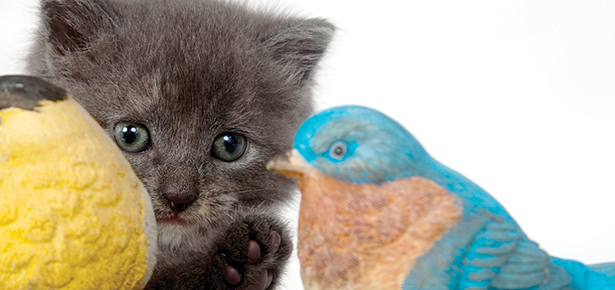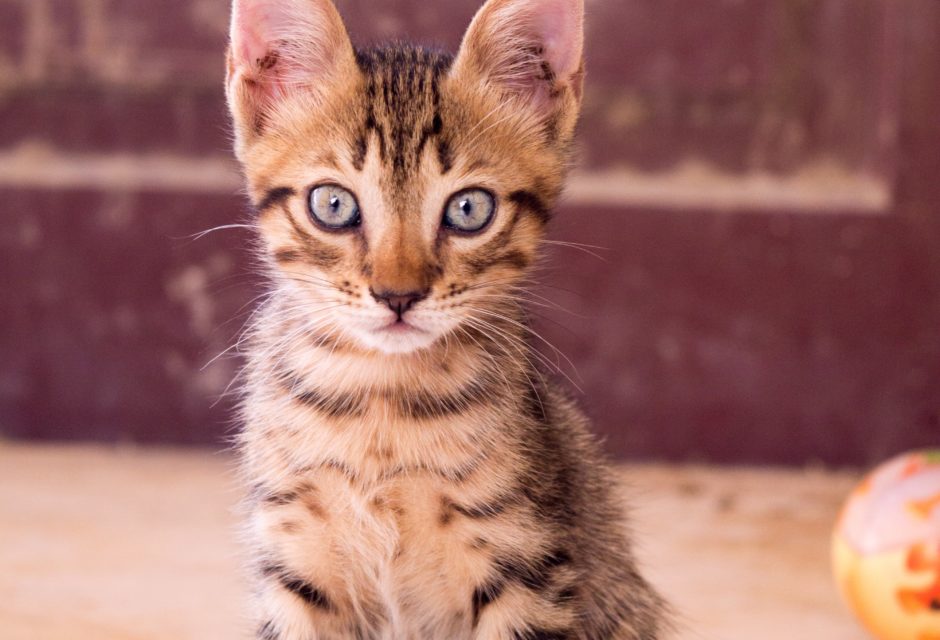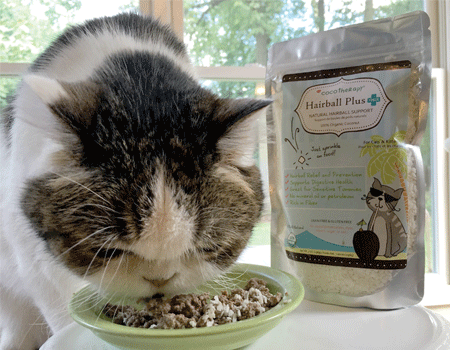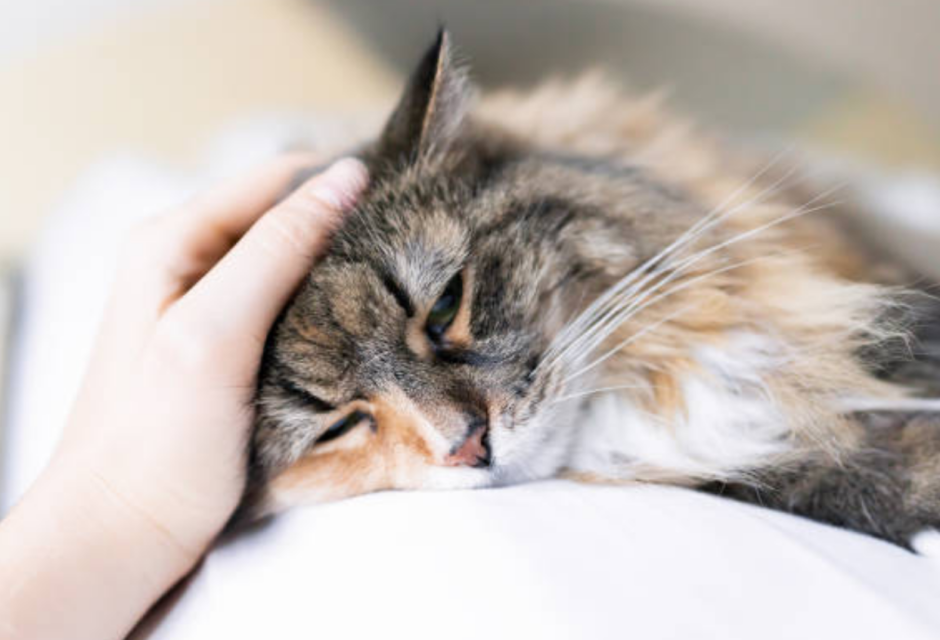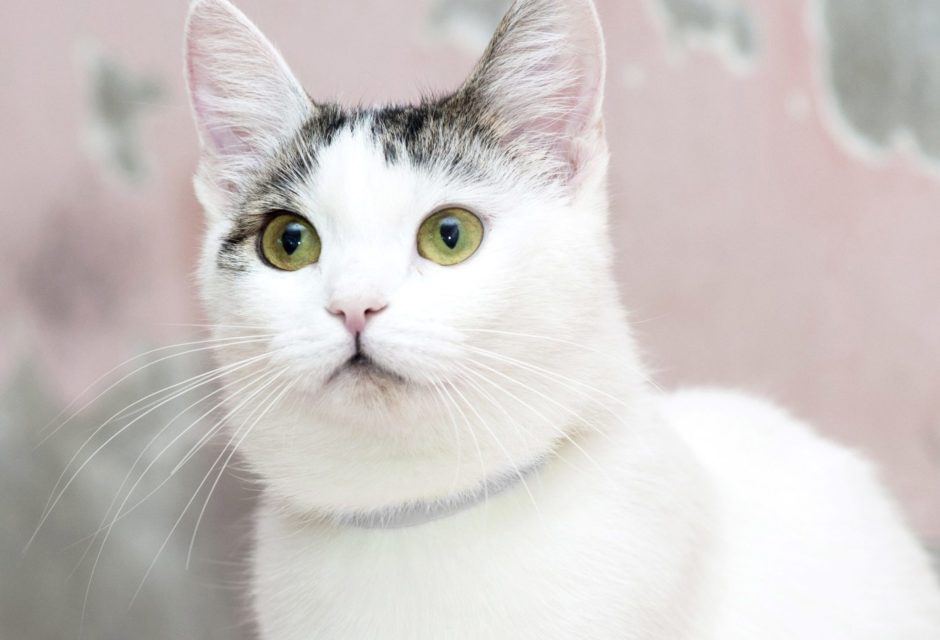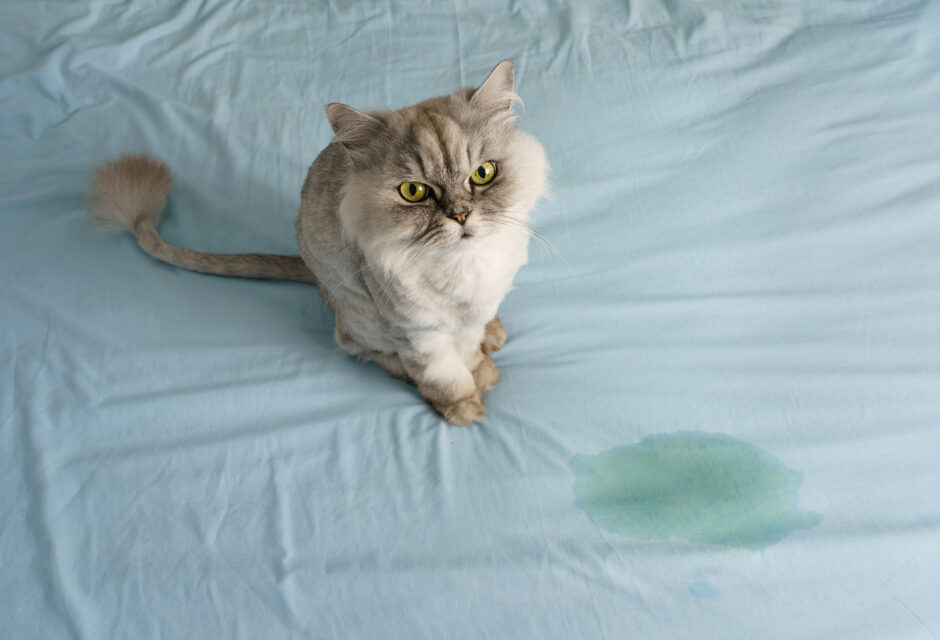
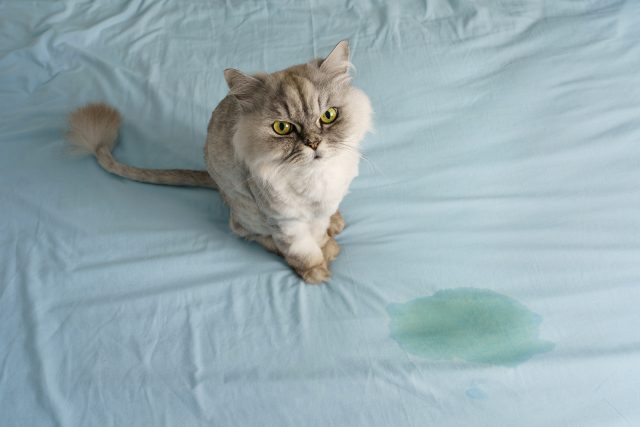
Litter Box Blues: Why Is Your Cat Peeing Outside the Litter Box?
10 Reasons Why Your Cat’s Having “Accidents”
After a perfect record for years, your cat stops using her litter box and begins leaving presents in potted plants and closets, beneath furniture—everywhere except where she should. What’s going on?
Though it may seem like a mystery to you, this frustrating turn of events usually makes sense to your cat, who, though instinctively inclined to bury her waste, may stop doing so if any unexpected change in litter box protocol occurs. Like it or not, change can cause stress and alter her behaviour.
PEEING OUTSIDE THE BOX? LOOK TO THE LITTER BOX ITSELF
More often than not, the problem is right in front of you. Some change in the litter box itself, though not immediately obvious to you, may have upset your feline. She’s still relieving herself—just not where you want.
Let’s take a look at the ten most common reasons your cat might stop using her litter box and what you can do to correct the problem. Often just a slight adjustment by you can put her back on track and restore normalcy to the home.
 1. Dirty Litter
1. Dirty Litter
As basic as this sounds, it is often simply a matter of keeping the litter clean, as defined by your cat’s standards. Some cats won’t mind using a litter box with a moderate amount of waste in it, while others won’t go near a box that’s been used even once. If you have gone too long between cleanings, your wayward cat may be trying to tell you to scoop or change the litter out completely. This issue often happens when, for some reason—vacation, working late, illness—you fall behind on your cleaning regimen. To set things right, simply change out the litter and then increase your scooping frequency.
2. Change of Litter
You know how wedded to routine your cat is. Change anything, and you run the risk of provoking a housetraining issue. Cat lovers who on a whim try a new brand of litter run this risk. A new type of litter smells, looks, and feels different to your cat who, happy with the status quo, does not want to change. No matter how enticing the marketing or how appealing the product may seem to you, it’s your cat who will decide what works and what doesn’t. If you have changed litter brands recently, think back; did the misbehaviour begin around that time? If so, go back to your old brand and see if that solves the problem. If you must change brands for some reason, do so gradually, a bit at a time over at least two or three weeks, just as you would with a change in food.
3. To Cover or Not to Cover?
Applying your own sense of privacy to your cat might be a big mistake. In thinking a cat may want to be concealed while using the toilet, some people install a cover over the box, only to discover that the cat has begun to avoid this new “sanctuary.” Truth is, cats used to an uncovered box will often find a new cover confining or even threatening. While inside, she may feel vulnerable due to an inability to see what’s going on. Remember that in the wild, felines are most at risk from predators while eliminating; they need to see if that wolf, bear or crocodile is sneaking up! Plus, covers trap in odours, doubling the odds that your cat will object. If you’ve recently placed a cover on the litter box, remove it pronto and see what happens.
4. One Size Does Not Fit All
A litter box that feels too large or too small to a cat might dissuade her from feeling comfortable using it. Too small and she might feel cramped, or sense that there’s not enough litter to effectively bury the waste. Too large and waste buildup and odour could turn her off. If the lip is too high, especially for older cats with arthritis, she won’t be able to comfortably get in.
Opt for a litter box at least one-and-a-half to two times her length and at least as wide as she is long. Many boxes available in pet stores are smaller than this, so be sure to shop carefully. Avoid boxes with entries higher than four inches, especially for an older cat.
5. Find Your Own Toilet!
Most cats would rather not share a litter box. It simply goes against their instinctive desire to eliminate secretively and to hide waste from both predators and competitors. Yet in many multiple-cat homes, one often finds a single overworked, malodorous litter box. And, more often than not, these homes will have at least one cat eliminating somewhere outside of the box.
Always have at least one litter box per cat. Locate them in separate areas to ensure privacy and to maintain territorial détente. Keep them in those same spots, instead of shifting them around randomly. Watch who uses which box; cats often prefer to “adopt” their own. Then, maintain the territorial peace by not moving the boxes.
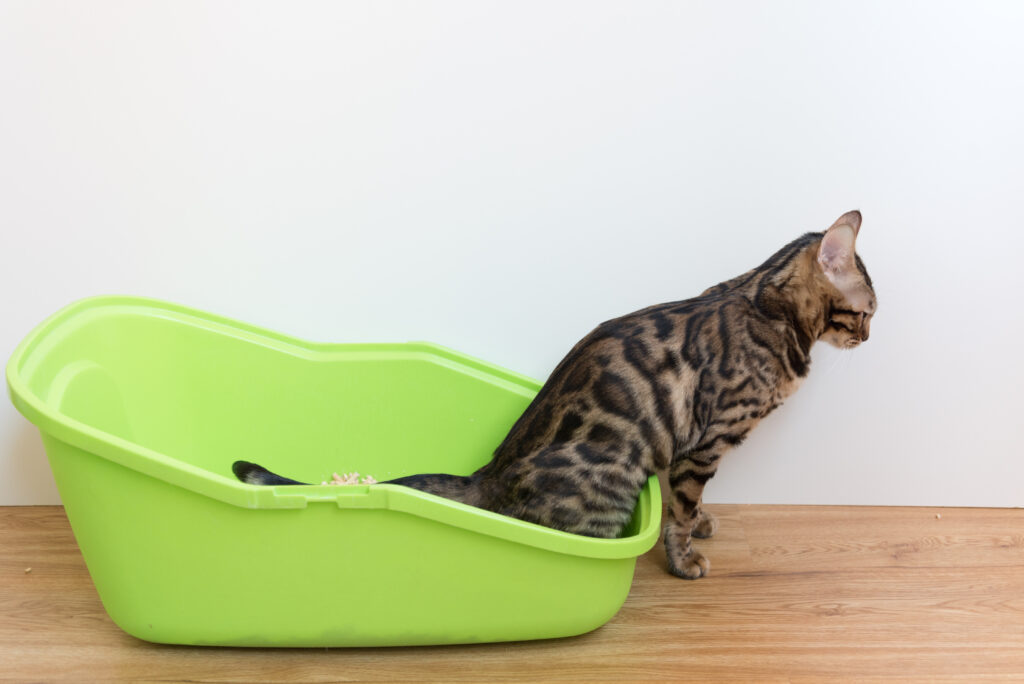
Photo: bigstock.com/dewessa
6. Privacy, Please!
Cats want to eliminate in a quiet, sheltered area and not in the middle of a busy, high-traffic part of your home. Place a litter box in a hallway or in a room with lots of activity, and your cat may avoid it and look for quieter environs. Instead, choose a laundry room, guest bathroom, or some other out-of-the-way spot, and then leave it there. Be sure that it isn’t close to a noisy furnace, or frequently used washing machines or dryers, as the clamor and heat from these could spook your cat.
7. Fill Her Up!
When a litter box doesn’t contain enough litter, your cat won’t be able to properly bury her waste. Odour will build up, eventually causing her to look elsewhere. To prevent this, be sure to keep about two to three inches of evenly spread, clean litter in the box. Avoid more than three inches of litter, as this can create a less stable feel for the cat and can get litter on her legs and belly, something she will not like at all.
8. Moving Targets
In preparation for a friend’s visit, you temporarily move your cat’s litter box from the upstairs guest bathroom to the laundry room downstairs. You carry her down there and show her where it is; she sniffs at it then walks out. Upon coming home from work that evening, you find an unholy mess in the guest bathroom, where the box used to be. Guess who goofed? Most cats are creatures of ritual and habit and, as such, don’t want their litter boxes moved. Unless absolutely necessary keep her litter box in the same spot. If a move is needed, do so very gradually, over a week or more. Move it to the other side of the room, then into the hallway, then farther down the hall, until you ultimately get the box to the new location.
…Or Moving Houses
If you move to another home, this dramatic change in territory will stress your cat, resulting in possible housetraining slip-ups. To minimize this, keep her in one room of the new home for a few days with her food and water dishes on one side and her old litter box on the other. Set up another litter box in an appropriate spot in the home then gradually give her freedom to explore. To make the new territory more comforting, spread her scent by rubbing a soft cloth on her face, and then wiping it onto spots around the new place—carpets, walls, and even in front of the new box. Be sure to spread her toys around, too. Eventually you can locate the old litter box wherever you’d like it, while keeping the second box and moving it somewhere else. It may take time, but eventually she will accommodate to the new digs, and enjoy having that second bathroom! (If possible, it’s always advisable to have two litter boxes for one cat.)
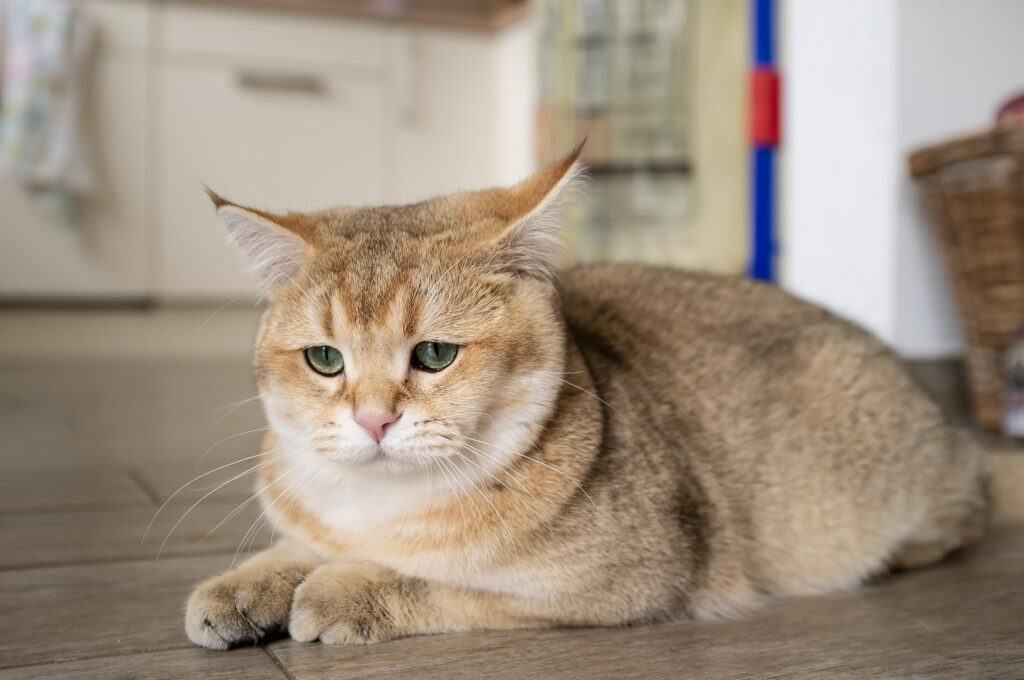
Photo: bigstock.com/koldunova
9. Traumatic Associations
Even if your cat’s litter box is clean and happily used for years, a traumatic event occurring while she is in or near it can convince her to stop using it. An interruption by a dog or another cat, something falling onto her from a shelf above, a loud noise, a flood from a washing machine—nearly anything can sour her on using that litter box again. Even a bout of constipation or painful bowel movement can be associated with the box and the room itself.
To prevent this, locate litter boxes in quiet, safe areas, with no chance of dog intrusions, falling objects or other potential traumas. Be sure children in the home know to leave the cat alone while she eliminates. In a multiple-cat home, provide a box for each cat, to lessen cat-on-cat spats near or in the litter box. If your cat has experienced trauma near the box and won’t use it, try relocating it to the opposite end of the home. If need be, purchase a new, slightly different style of box and place it in that new spot.
10. Sick Leave
Any time a cat gets sick, her elimination habits can suffer. Urinary tract infections, kidney stones, cystitis, viral, bacterial or amoebic infections, or a host of other medical conditions can cause your cat’s litter box habits to go south. To prevent this, get her an annual checkup with your veterinarian and feed the best food possible; a quality wet food is preferable to dry, not only for its abundance of meat protein and minimal carbohydrates, but for its high moisture content, essential for proper elimination. And if your cat begins to show signs of illness—lethargy, loss of appetite, loose stool, excess vocalizations—visit the veterinarian to head off major health issues before they begin to affect her elimination habits.
WHEN IT’S NOT THE LITTER BOX
Blame can’t always be laid on the litter box. Sometimes just a simple change in the home environment can throw your cat into a tizzy, and cause an interruption in good housetraining skills. For instance, a rearrangement of furniture can upset a sensitive cat, and cause accidents. Even bringing in a new sofa or chair, with its new smells, can do it. A new addition to the family in the form of a baby, long-term visitor, or new roommate can often confuse and worry a cat, resulting in (you guessed it) accidents. Temporary construction noises coming from the outside can upset, as can something as simple as a new coat of indoor paint or a change in perfume or antiperspirant by you or another person in the home. The introduction of a new cat or dog to the home will almost certainly create temporary housetraining havoc, too, so think hard about it before you add a new face to the mix.
Luckily, unlike changes to the litter box, these types of territorial changes will usually have only a temporary affect on your cat’s habits. Given time, she will most likely get back to her normal routines once her suspicions ebb and she comes to accept the new situation. Just be sure to introduce change gradually, instead of all at once.
By better understanding your cat’s intimate connection with her litter box and by endeavouring to maintain the status quo if you have a routine that’s working, you will prevent unexpected elimination habits before they begin. You’ll keep things “in the box,” and ensure a happy, tidy cat for years to come.
Join the newsletter and never miss out on cat content again!
"*" indicates required fields
By clicking the arrow, you agree to our web Terms of Use and Privacy & Cookie Policy. Easy unsubscribe links are provided in every email.





 1. Dirty Litter
1. Dirty Litter